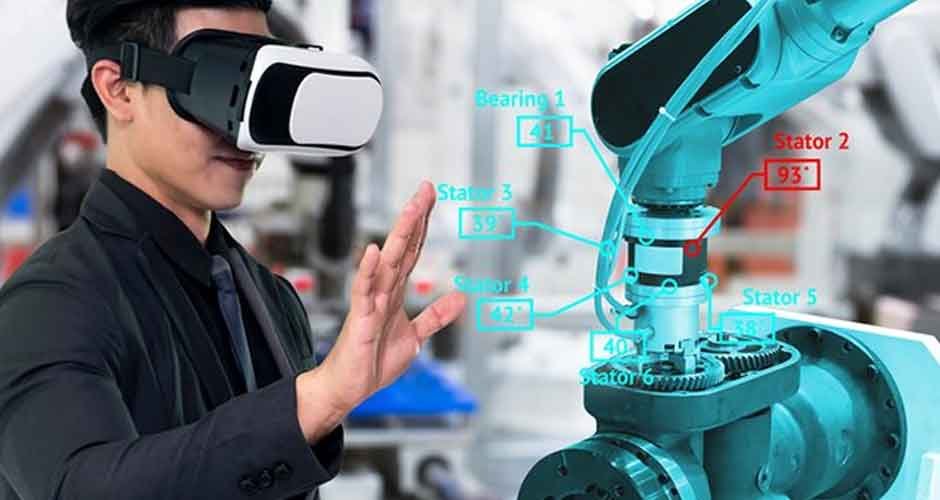Even though virtual reality training remains innovative, it’s gaining substantial traction across learning and development and education sectors. The technology simulates various learning scenarios, from insurance and healthcare to customer service and sales training. With its growing adoption, the virtual reality training company provides numerous real-world examples to inform your research and implementation endeavors.
Virtual Reality Training Cases
We’ve curated a selection of innovative applications of virtual reality for employee training to inspire you with ideas on how to leverage this technology within your company.
VR Training in Sports
Virtual simulation offers a valuable opportunity to hone skills in scenarios that demand extensive personnel, materials, and technical resources, all within real-world conditions. Renowned university teams and NFL squads leverage such software for sports like football, tennis, baseball, and hockey.
VR Training for Healthcare Workers
Training for medical personnel is crucial across all levels of specialization, from nurses to doctors with diverse expertise. By simulating medical procedures within highly realistic environments, healthcare professionals can enhance their skills in a safe and controlled setting.
Employee Onboarding
Implementing a targeted training protocol for new hires can be expedited using virtual simulation, facilitating a faster onboarding process. Additionally, the technology enables companies to quickly scale and execute this procedure within a secure and controlled virtual setting.
VR Training for the Emergency Services
Every municipality or business, regardless of size, maintains emergency services or personnel. Through virtual reality training, police officers can refine their weapon-handling proficiency. At the same time, firefighters and emergency responders can simulate scenarios unique to their respective roles and practices using standard tools effectively in response to different situations.
VR Training in Automotive
Leading companies like BMW, Peugeot, Audi, and Volkswagen utilize virtual reality to enhance the skills of their employees and engineers. The technology offers various applications, from simple instructions for managers to delivering advanced training for engineers responsible for critical production areas and factory operations.
VR Training in Aviation
Virtual reality flight training enhances students’ ability to gauge distance through stereoscopic vision, facilitates a thorough understanding of cockpit settings and controls, and can replace instructors at specific stages, reducing training costs significantly. Additionally, aviation companies employ virtual reality as a flight simulator for both airplane and helicopter pilots and a training regimen for maintenance personnel.
VR Military Training
Military personnel can simulate diverse battlefield scenarios and acquire the skills to respond effectively. Additionally, virtual reality provides an ideal platform to train in handling complex weaponry, a crucial aspect of modern high-tech warfare.
VR Training for Manufacturing
Virtual reality simulation accurately replicates production lines, procedures, and machine operations, enabling manufacturing companies to streamline staff training for complex production units. This technology is particularly beneficial as it eliminates the risk of accidental damage to costly equipment facilities. Additionally, VR training can be conducted remotely, minimizing the likelihood of workplace injuries.
Barriers to the Adoption of VR Training
While VR offers numerous benefits for corporate training, adoption barriers remain. The upfront costs of implementing VR training can be higher due to the initial investment in VR headsets. However, newer standalone options like the Meta Quest 3 and Pico 4 are more cost-efficient and portable, allowing employees to borrow headsets from their company for training.
Although premium options like Apple’s Vision Pro and Varjo 8k headsets offer unique features, they come at a higher price. Additionally, integrating VR training into existing Learning Management Systems (LMS) and customizing content for specific brands can further increase costs and risk.
Despite these challenges, companies embrace VR for health and safety training, with platforms for deploying VR simulations for various training needs.
Summing up
Businesses are increasingly integrating VR into their corporate training programs. Whether for public speaking, medical simulations, or hazardous scenarios, VR offers employees a realistic and secure training environment. Despite the initial investment, managers are recognizing the long-term benefits of VR training, including improved engagement, safety, and retention. As the VR industry advances and more training possibilities emerge in virtual environments, VR training is poised to become standard practice.
Virtual reality offers numerous advantages to businesses, particularly in employee training, reskilling, and upskilling, enabling them to perform their roles more effectively. By embracing these innovations, businesses enhance their development strategies in competitive environments, adapt to changing economic conditions, and navigate market fluctuations more effectively.


